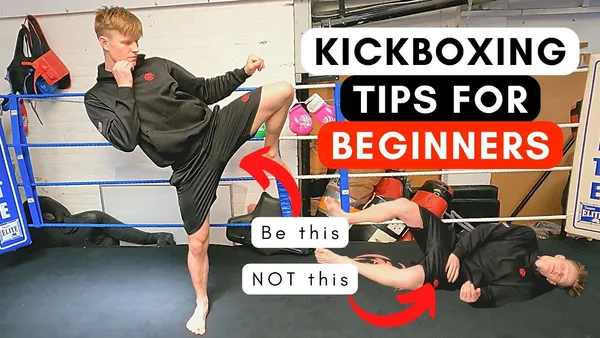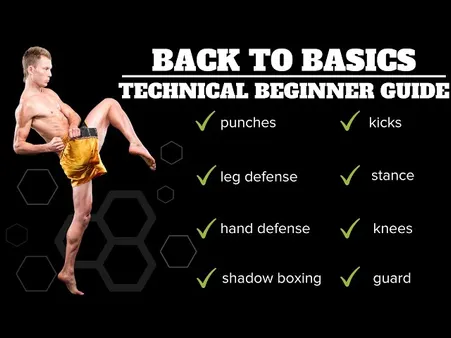Table of Contents
Kickboxing, a martial art renowned for its captivating blend of power, agility, and technique, invites you on an exhilarating journey of self-discovery. Kizworld presents an accessible guide to kickboxing, guiding you through the intricacies of this dynamic sport, from the basic stances and strikes to advanced combinations and defensive maneuvers. Whether your aspirations lie in fitness, self-defense, or competitive glory, this comprehensive resource empowers you to unlock your inner warrior and embark on the path to kickboxing mastery.
How to Learn the Basic Kickboxing Skills and Techniques: A Comprehensive Guide
I. Mastering the Basic Kickboxing Skills: A Comprehensive Guide
Mastering the Basic Kickboxing Skills: A Comprehensive Guide
Essential Kickboxing Techniques
Kickboxing is a dynamic combat sport that combines elements of boxing and martial arts. It offers a full-body workout that improves cardiovascular health, strength, and flexibility. Kickboxing also teaches self-defense skills and boosts confidence. To master the basics of kickboxing, it's important to learn the essential techniques, including punches, kicks, and combinations.
Punches are the foundation of kickboxing. The most common punches are the jab, cross, hook, and uppercut. The jab is a quick, straight punch that is used to establish range and set up other punches. The cross is a powerful punch that is thrown with the rear hand. The hook is a short, looping punch that is thrown with the lead hand. The uppercut is a powerful punch that is thrown from below the waist.
Kicks are another essential part of kickboxing. The most common kicks are the front kick, roundhouse kick, side kick, and back kick. The front kick is a straight kick that is thrown with the lead leg. The roundhouse kick is a powerful kick that is thrown with the rear leg in a circular motion. The side kick is a quick, sharp kick that is thrown with the side of the foot. The back kick is a powerful kick that is thrown with the heel of the rear foot.
Combinations are sequences of punches and kicks that are thrown together in a fluid motion. Combinations are used to overwhelm the opponent and create openings for scoring strikes. Some common combinations include the jab-cross, jab-hook-cross, and cross-hook-uppercut.
- Related Post: How to Learn the Basic Boxing Skills and Techniques
- Related Post: The Best Kickboxing Exercises and Drills
How to Practice Kickboxing
The best way to learn kickboxing is to find a qualified instructor and take regular classes. Classes will teach you the basics of kickboxing, including proper technique, footwork, and combinations. You can also practice kickboxing at home using a heavy bag or a partner. When practicing at home, it's important to focus on proper technique and to avoid overtraining.
Here are some tips for practicing kickboxing at home:
- Start with a warm-up to get your body ready for exercise.
- Practice your punches and kicks in front of a mirror to check your form.
- Use a heavy bag to practice your combinations.
- Find a partner to practice with so you can get feedback on your technique.
- Don't overtrain. Start with a few short sessions each week and gradually increase the duration and intensity of your workouts.
Related Post: How to Get Started with Kickboxing as a Beginner
Kickboxing Training Regimen
A typical kickboxing training regimen includes a combination of cardiovascular exercise, strength training, and skill development. Cardiovascular exercise helps to improve heart and lung health, while strength training helps to build muscle and power. Skill development includes practicing punches, kicks, and combinations.
Here is a sample kickboxing training regimen:
Day | Activity | Duration |
|---|---|---|
Monday | Cardiovascular exercise (running, swimming, biking) | 30 minutes |
Tuesday | Strength training (squats, lunges, push-ups, pull-ups) | 30 minutes |
Wednesday | Skill development (punches, kicks, combinations) | 30 minutes |
Thursday | Cardiovascular exercise (running, swimming, biking) | 30 minutes |
Friday | Strength training (squats, lunges, push-ups, pull-ups) | 30 minutes |
Saturday | Skill development (punches, kicks, combinations) | 30 minutes |
Sunday | Rest | - |
Related Post: The Top Kickboxing Competitions and Events
Benefits of Kickboxing
Kickboxing offers a number of benefits for both physical and mental health. Physical benefits include improved cardiovascular health, strength, flexibility, and coordination. Mental benefits include increased confidence, stress relief, and improved focus.
Here are some specific benefits of kickboxing:
- Improved cardiovascular health: Kickboxing is a great way to get your heart rate up and improve your cardiovascular health. A study published in the journal "Medicine & Science in Sports & Exercise" found that kickboxing can help to reduce the risk of heart disease and stroke.
- Increased strength: Kickboxing helps to build muscle and strength in the arms, legs, and core. A study published in the journal "The Journal of Strength and Conditioning Research" found that kickboxing can help to increase muscle mass and strength in both men and women.
- Improved flexibility: Kickboxing helps to improve flexibility in the hips, knees, and shoulders. A study published in the journal "The Journal of Sports Medicine and Physical Fitness" found that kickboxing can help to improve flexibility in both men and women.
- Increased coordination: Kickboxing helps to improve coordination and balance. A study published in the journal "Perceptual and Motor Skills" found that kickboxing can help to improve coordination and balance in both children and adults.
- Increased confidence: Kickboxing can help to boost confidence and self-esteem. A study published in the journal "Psychology of Sport and Exercise" found that kickboxing can help to increase confidence and self-esteem in both men and women.
- Stress relief: Kickboxing can be a great way to relieve stress and tension. A study published in the journal "The Journal of Alternative and Complementary Medicine" found that kickboxing can help to reduce stress and anxiety.
- Improved focus: Kickboxing can help to improve focus and concentration. A study published in the journal "The Journal of Sports Medicine and Physical Fitness" found that kickboxing can help to improve focus and concentration in both children and adults.
Related Post: The Most Famous Kickboxers and Fighters of All Time
Advanced Kickboxing
Once you have mastered the basics of kickboxing, you can start to learn more advanced techniques. Advanced kickboxing techniques include spinning kicks, jumping kicks, and takedowns. You can also learn how to counter your opponent's attacks and how to develop your own unique style of kickboxing.
To learn advanced kickboxing techniques, it's important to find a qualified instructor who can teach you the proper technique and safety precautions. You can also find instructional videos and books that can help you to learn advanced kickboxing techniques.
Related Post: How to Train Like a Kickboxer
II. Effective Striking Techniques For Kickboxing
Effective Striking Techniques For Kickboxing
Mastering the Jab
The jab is a fundamental strike in kickboxing, serving as a versatile tool for controlling distance, setting up combinations, and scoring points. To execute an effective jab, stand with your feet shoulder-width apart, knees slightly bent, and hands held up in front of your face. Extend your lead arm quickly and forcefully, aiming for your opponent's head or body. Keep your elbow tucked in and your wrist straight to generate power and accuracy. Retract your arm swiftly to protect yourself from counterattacks.
- Maintain a balanced stance for stability and mobility.
- Keep your eyes focused on your opponent to anticipate their movements.
- Vary the speed and timing of your jabs to keep your opponent guessing.
The Cross: Power and Precision
The cross is a powerful strike that can deliver significant damage when executed correctly. Start with your feet shoulder-width apart and your knees slightly bent. Shift your weight onto your back foot and rotate your hips as you extend your rear arm. Aim for your opponent's head or body, keeping your elbow tucked in and your wrist straight. Follow through with your punch and quickly retract your arm to avoid being countered.
Element | Description |
Stance | Maintain a stable and balanced stance to generate power. |
Rotation | Rotate your hips and shoulders to add power to your punch. |
Follow-Through | Extend your arm fully and follow through with your punch. |
The Hook: Short and Sharp
The hook is a short, powerful punch that can be thrown from close range. Stand with your feet shoulder-width apart and your knees slightly bent. Bend your lead arm at the elbow and bring your fist towards your opponent's head or body. Keep your elbow tucked in and your wrist straight to generate power. Retract your arm quickly to protect yourself from counterattacks.
- Aim for your opponent's chin, liver, or solar plexus for maximum impact.
- Keep your punches tight and compact to avoid exposing yourself to counterattacks.
- Vary the angle and trajectory of your hooks to keep your opponent guessing.
The Roundhouse Kick: Devastating Power
The roundhouse kick is a powerful and versatile kick that can be used to attack your opponent's head, body, or legs. Stand with your feet shoulder-width apart and your knees slightly bent. Lift your lead leg and chamber it behind you, keeping your knee bent. Rotate your hips and extend your leg, aiming for your opponent's target. Keep your toes pointed and your ankle locked to generate power. Retract your leg quickly to avoid being countered.
Element | Description |
Chambering | Lift your lead leg and chamber it behind you, keeping your knee bent. |
Rotation | Rotate your hips and shoulders to generate power. |
Extension | Extend your leg fully and aim for your opponent's target. |
The Front Kick: Speed and Accuracy
The front kick is a fast and accurate kick that can be used to keep your opponent at bay or set up combinations. Stand with your feet shoulder-width apart and your knees slightly bent. Lift your lead leg and extend it quickly towards your opponent's target. Keep your toes pointed and your ankle locked to generate power. Retract your leg quickly to avoid being countered.
- Aim for your opponent's head, body, or legs, depending on the situation.
- Keep your kicks sharp and snappy to maximize their impact.
- Vary the speed and timing of your front kicks to keep your opponent guessing.
III. Footwork and Movement Drills for Kickboxing
Footwork and Movement Drills for Kickboxing
Footwork and movement are essential elements of kickboxing, allowing you to evade attacks, create angles, and deliver powerful strikes. Here are some drills to improve your footwork and movement:
- Basic footwork drills: Practice moving forward, backward, and sideways, maintaining a balanced and athletic stance. Focus on keeping your feet light and quick, and your weight evenly distributed.
- Shadowboxing: Shadowboxing is a great way to practice your footwork and movement while also working on your striking technique. As you shadowbox, focus on moving smoothly and fluidly, and transitioning between different footwork patterns.
- Partner drills: Partner drills allow you to practice your footwork and movement with a live opponent. Some common partner drills include the following:
- Tag drill: In this drill, one partner tries to tag the other partner with a light touch, while the other partner tries to evade the tag by moving quickly and changing directions.
- Circle drill: In this drill, the partners stand in a circle and move around the circle, trying to maintain a certain distance from each other. The drill can be done with or without strikes.
- Sparring: Sparring is the ultimate test of your footwork and movement. As you spar, focus on moving intelligently and using your footwork to create opportunities for strikes and avoid your opponent's attacks.
Physical Benefits | Mental Benefits |
Improved cardiovascular health | Increased confidence |
Increased muscle strength and tone | Reduced stress and anxiety |
Improved flexibility and mobility | Improved focus and concentration |
Weight loss and fat burning | Enhanced self-discipline |
By incorporating these drills into your training routine, you can improve your footwork and movement, and become a more effective kickboxer.
Kickboxing is a great way to get in shape, learn self-defense, and have fun. If you're interested in trying kickboxing, there are many gyms and studios that offer classes for beginners. You can also find many resources online to help you learn the basics of kickboxing.
So what are you waiting for? Give kickboxing a try today!
Here are some additional tips for improving your footwork and movement in kickboxing:
- Stay light on your feet: Don't let your feet get too heavy or planted, as this will make it difficult to move quickly and change directions.
- Keep your knees slightly bent: This will help you absorb impact and maintain your balance.
- Use your arms to help you move: Your arms can be used to help you generate power and momentum, and to help you change directions quickly.
- Be aware of your surroundings: Pay attention to your opponent's movements and be prepared to react quickly to their attacks.
- Practice regularly: The more you practice, the better your footwork and movement will become.
With a little practice, you can improve your footwork and movement in kickboxing and become a more effective fighter.
If you're looking for a challenging and rewarding workout, kickboxing is a great option. It's a full-body workout that will help you get in shape, learn self-defense, and have fun. So what are you waiting for? Give kickboxing a try today!
IV. Core and Conditioning Exercises for Kickboxing
Core and Conditioning Exercises for Kickboxing
Essential Core Exercises
- Planks: Hold a plank position for 30 seconds to a minute, engaging your core and keeping your body straight.
- Crunches: Perform 2-3 sets of 15-20 crunches, focusing on contracting your abs and exhaling as you lift your head and shoulders off the ground.
- Leg Raises: Lie flat on your back and raise both legs simultaneously, keeping them straight and engaging your lower abs. Aim for 3 sets of 10-15 repetitions.
- Russian Twists: Sit on the floor with your knees bent and feet elevated, holding a medicine ball or dumbbell in front of you. Twist your torso from side to side, engaging your obliques. Do 3 sets of 10-15 repetitions on each side.
Conditioning Drills
- Jump Rope: Incorporate jump rope into your warm-up or as a standalone conditioning exercise. Aim for 2-3 minutes of continuous jumping, gradually increasing the intensity and duration over time.
- Sprints: Perform short sprints of 20-30 seconds, followed by a brief rest period. Repeat for 8-10 rounds, pushing yourself to maintain a high intensity throughout the drill.
- Mountain Climbers: Start in a plank position and bring one knee towards your chest, then quickly switch legs. Continue alternating legs, maintaining a fast pace for 30 seconds to a minute.
- Burpees: Combine a squat, push-up, and jump into one explosive movement. Aim for 3 sets of 10-15 repetitions, focusing on maintaining proper form and generating power.
Benefits of Core and Conditioning
- Improved Balance and Stability: Strong core muscles help stabilize your body, enhancing your balance and coordination during kickboxing movements.
- Enhanced Power and Speed: A strong core generates power for explosive kicks and punches, allowing you to deliver more impactful strikes.
- Reduced Risk of Injury: Well-conditioned core muscles help protect your spine and lower back from potential injuries during intense kickboxing workouts.
- Improved Endurance: Strong core muscles contribute to overall endurance, enabling you to maintain a high level of performance throughout your kickboxing sessions.
By incorporating these core and conditioning exercises into your kickboxing routine, you can enhance your overall fitness, improve your performance, and reduce the risk of injuries. Remember to maintain proper form and gradually increase the intensity and duration of your workouts over time.
To further enhance your kickboxing skills, consider exploring our related posts on Learning the Basic Kickboxing Skills and Techniques, Benefits of Kickboxing for Fitness and Self-Defense, and Choosing the Best Kickboxing Equipment and Gear.
V. Conclusion
Kickboxing is an empowering martial art that combines physical and mental discipline to promote overall health and well-being. Whether your goals are fitness, self-defense, or personal growth, kickboxing provides a rewarding and transformative experience. As you continue your kickboxing journey, remember to embrace the challenges, stay committed to your training, and always strive for improvement. With dedication and perseverance, you'll unlock the true power within you and discover the limitless possibilities of kickboxing.